Moviegoers as well as frequent streamers still prefer the theatrical movie experience over streaming for highly anticipated films
The cinematic experience remains unrivaled in its ability to captivate audiences with immersive storytelling on a grand scale. A recent Screenvision/VAB study confirms what industry experts have long understood: dedicated moviegoers and frequent streamers alike continue to prioritize theatrical releases for their most anticipated viewing moments. For brands looking to make an impact, this is a golden opportunity.
There’s a reason why advertisers have long turned to cinema: it’s a setting where audiences are fully engaged, distraction-free, and emotionally connected. And the numbers back it up. According to the Screenvision Custom Study, both frequent moviegoers and streamers agree that theaters deliver the most exciting, memorable, and immersive experiences for their anticipated content:
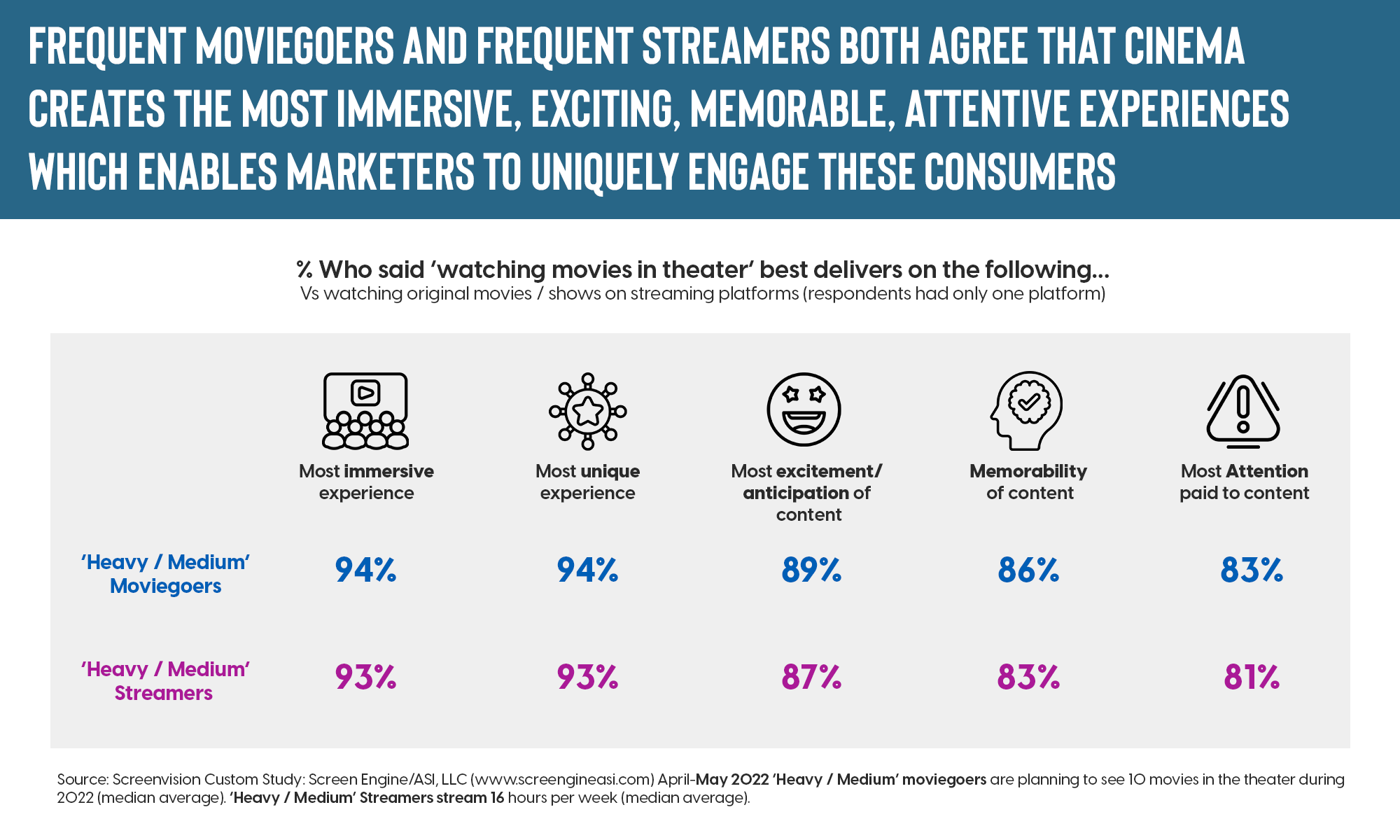
For advertisers, this concentrated attention represents invaluable currency in an increasingly fragmented media landscape. Cinema advertising sidesteps the challenges of divided attention, offering instead a rare opportunity to engage with audiences in a state of complete receptivity.
Cinema’s enduring appeal transcends mere content consumption—it offers a deliberate social and cultural experience that streaming cannot replicate. The communal nature of theatrical viewing creates a shared emotional journey that resonates deeply with audiences.
The same study revealed key factors driving theatrical preference:
This powerful combination of cultural significance and sensory immersion creates exceptional conditions for effective advertising, with messages benefiting from heightened emotional receptivity and enhanced recall.
As the industry approaches the summer season, cinema advertising reaches its zenith of effectiveness. The coming months represent the premier period for theatrical attendance, offering advertisers access to the year’s most anticipated films and the largest, most diverse audiences.
This summer’s impressive lineup features prestigious releases spanning multiple genres, including the eagerly anticipated “Marvel Thunderbolts*,” the reimagined “Superman,” the latest “Jurassic World” installment, “Mission: Impossible – The Final Reckoning,” “Karate Kid: Legends,” “How to Train Your Dragon,” “F1,” “The Fantastic Four: First Steps,” and numerous other high-profile productions.
This summer’s blockbuster lineup will draw diverse audience segments across demographics, offering advertisers precision-targeted opportunities rarely found in other media. Cinema stands alone in its ability to consistently deliver Super Bowl-caliber impressions week after week throughout the season. As these cultural events draw unprecedented crowds, brands leveraging cinema advertising will capture a unique combination of focused attention and emotional engagement—reinforcing cinema’s position as the premier platform for high-impact brand messaging when audiences are most receptive.
Source: Screenvision, VAB, Google
Muvi Cinemas, Saudi Arabia’s homegrown cinema brand, has officially opened its twenty-second location at The Village Center in Jeddah. This milestone marks another step in the brand’s efforts to enhance the entertainment options available across the Kingdom.
The Village Center, a state-of-the-art retail development by Hamat Holding, represents a significant addition to Jeddah’s commercial landscape. Strategically positioned at the intersection of Al Haramain Road and Prince Talal bin Mansour Road in the prestigious Al Asalah district, this integrated lifestyle destination is designed to deliver exceptional value to both residents and visitors through its comprehensive retail and entertainment offerings.
The latest Muvi Cinemas venue demonstrates the company’s commitment to innovation and excellence through its advanced multiplex configuration, featuring 14 cutting-edge screens with a total capacity of 1,568 seats. The facility showcases the company’s premium viewing formats, including an immersive Xperience screen, three exclusive Suite theaters offering premium amenities, and ten standard screens equipped with the latest audiovisual technology. This expansion marks Muvi Cinemas’ sixth strategic location in the Jeddah metropolitan area.
This development brings Muvi Cinemas’ total operational portfolio to 204 screens across 22 locations, spanning nine key markets throughout Saudi Arabia, reinforcing the company’s position as a leading contributor to the Kingdom’s entertainment infrastructure.

@hamatco #موفي_سينما صارت الحين في #ذا_فيلج 🤩🔥🔥🍿🎥 #cinema #movie #jeddah ♬ original sound – هامات Hamat
The inauguration of Muvi Cinemas at The Village Center aligns with the company’s strategic commitment to Vision 2030, contributing significantly to the enhancement of lifestyle and entertainment options within the Kingdom while driving economic diversification and growth.
For brand partnerships and advertising opportunities at Muvi Cinemas – The Village Center, Jeddah, please contact our sales team.
Sources: Hamat, MVM CinePlan and CineMeasure.
Cinema advertising capitalizes on positive moods to boost brand engagement and create memorable moments for consumers.
In today’s fast-paced ad landscape, cutting through the noise isn’t just about creative execution—it’s about reaching people when they’re most open to listening. According to Hearst’s ‘Power of Positivity – 2023’ study, consumers are far more receptive to brand messaging when they are in a positive state of mind, leading to increased favorability and consideration.
When people are in a good mood, they’re naturally more open to suggestions, which makes them more likely to recall ads and think highly of the products they see advertised. But it doesn’t stop there—people who feel positive aren’t just passive observers; they’re more inclined to talk about the ads they’ve seen, dig deeper into the product, and even make that all-important purchase. So, the question is: where can brands make the most of these positive moments?
Cinema audiences hold the answer, as environments like cinema, where the vibes are overwhelmingly positive, give brands the chance to create lasting impressions that go far beyond the moment. What makes cinema so uniquely powerful is its ability to create an immersive experience that not only captures attention but also elevates mood. Unlike other media, cinema engages audiences in a shared moment, creating a feeling of connection and community that’s hard to replicate.
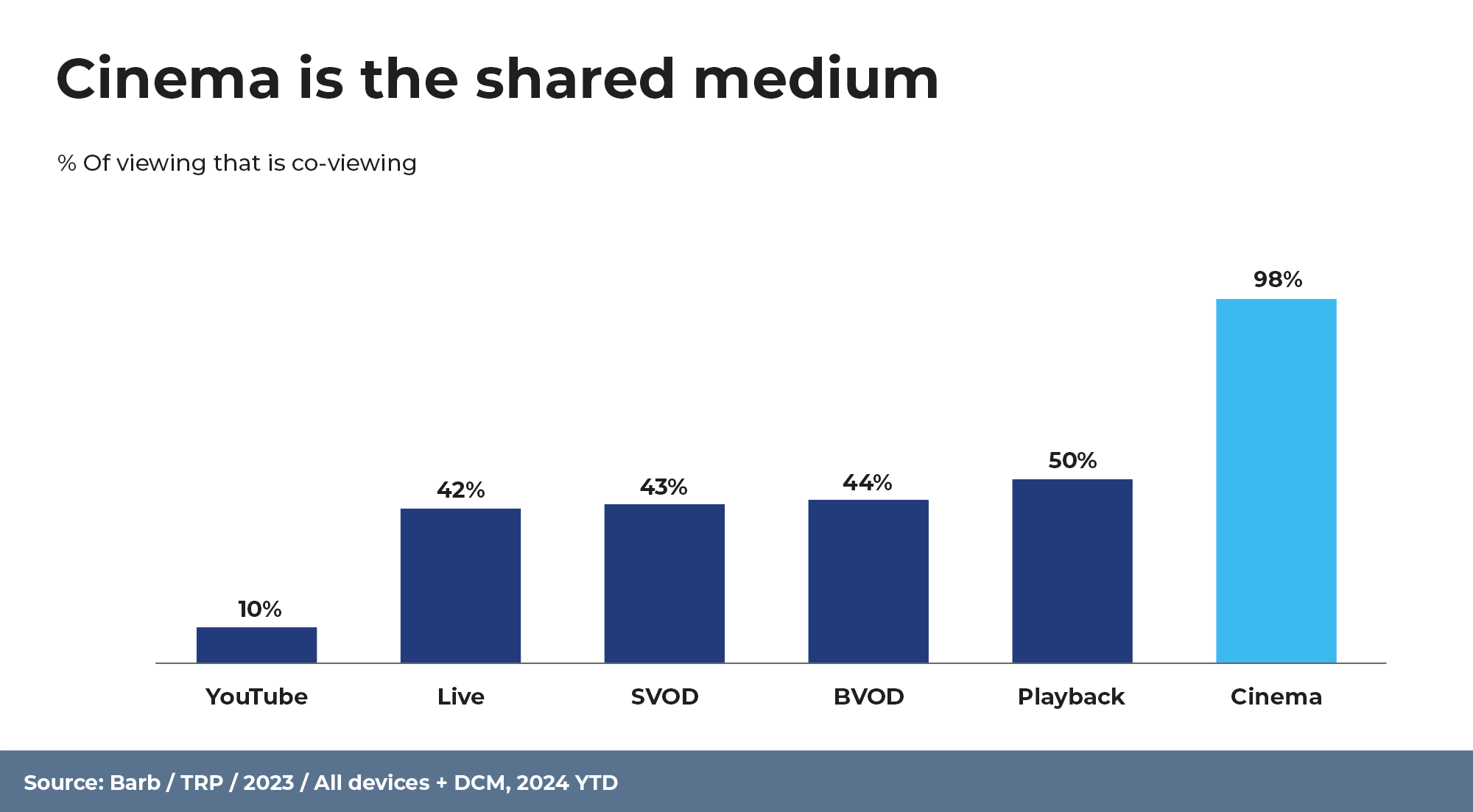
Audiences see the ‘ads and trailers’ as part of the event experience and unlike other channels that are viewed alone, cinema naturally creates an environment that can generate a moment of talkability for brands about their ads – DCM Maximise with Cinema, 2024.
Two recent studies by DCM in 2023 and 2024 highlight the crucial role of a positive mindset in shaping consumer behavior. The first finding reveals that around 60% of moviegoers often say they feel a sense of connection when they’re at the movies. The second finding suggests that in contrast to the mixed emotions often experienced on social media, an impressive 78% of cinemagoers say they’re in a great mood when watching a film. This positive state of mind makes them more receptive to the ads they see, turning what could be just another brand message into a memorable moment.
Let’s not forget the beauty of cinema’s focus. Cinema is a rare space where people are truly present. It’s where they put down their phones and lean into the moment, absorbing both the film and the pre-show ads in full. This creates a unique opportunity for brands to craft messages that resonate deeply. The key for brands is to match the tone of the room by using inspiring stories, uplifting visuals, and creating a sense of shared experience that fits the mood of the movie theatre. Cinema isn’t just a screen; it’s a stage that brands can use to generate an immersive experience rather than simply deliver a message.
For advertisers, cinema isn’t merely a venue; it’s a unique opportunity to produce something memorable. It’s a place where positivity can be transformed into brand love, turning ads into moments that matter. Leveraging the uplifting energy of the cinema experience allows brands to make their messages stick in a way that few other mediums can match. As the conversation around the long-term effects of positive advertising continues to grow, one thing is clear: the mood-boosting magic of cinema and its role in fostering positivity is a force to be reckoned with, driving a new era of brand engagement.
Credits: Hearst, DCM, Campaign UK, VAB
Get ready to set sail once again! Moana 2, the eagerly awaited sequel to Disney Animation Studios’ 2016 hit, is on the horizon. Moana (2016) brought us the fearless Polynesian princess and her unforgettable journey with Maui, the demigod, on a quest to save her island. Fans have been buzzing with excitement ever since the announcement of the sequel, and now, the wait is almost over!
In Moana 2, the adventure picks up three years after the original film. Moana sets out on a daring quest to locate the lost island of Motufetu, once a crucial oceanic link. However, this island has been hidden by the vengeful God of Storms, making Moana’s journey more treacherous than ever.

Prepare for an exciting adventure with the introduction of new faces. Simea, Moana’s spirited 3-and-a-half-year-old sister voiced by Khaleesi Lambert-Tsuda, is a bundle of energy and admiration, bringing a fresh and heartwarming dynamic to the story. On the other hand, Matangi, voiced by Awhimai Fraser, is a formidable new antagonist who wields the power of storms. Her unpredictable nature and ominous presence promise to challenge Moana and her crew in unprecedented ways.
Of course, the adventure wouldn’t be complete without the return of beloved characters. Fans can look forward to seeing Auli’i Cravalho as Moana, Dwayne Johnson as Maui, Rachel House as Grandma Tala and more. This blend of new and beloved characters ensures a thrilling ride for audiences.
Animated films have been dominating the box office, and Moana 2 is set to follow suit. The original Moana grossed a staggering $643 million worldwide and attracted over 260,000 admissions during its UAE run. Building on this success, and following the momentum of animated sequels like Inside Out 2—which grossed over $1.6 billion—Moana 2 is poised for another blockbuster run.
Fans are buzzing with excitement as new videos and trailers for Moana’s upcoming adventure have taken the internet by storm, racking up millions of views. The sneak peeks show off stunning ocean battles, touching reunions, and the new track “We’re Back!” from Grammy® winners Abigail Barlow and Emily Bear.
Get ready, because Moana 2 is set to release on November 28, 2024.
With Moana 2 being one of the most anticipated films of the year, brands have a unique opportunity to ride the wave of excitement. Whether you’re targeting families, children, or adventure lovers, this sequel will attract audiences of all ages, offering unparalleled advertising opportunities. Contact us to advertise alongside this upcoming family blockbuster.
Source: IMDb, Entertainment Weekly, Collider, Variety, Motivate Val Morgan
In partnership with Havas Media Dubai and Motivate Val Morgan, Hermès returns to the cinema to launch an integrated campaign for the new Hermès Barénia perfume at select cinemas across the Middle East.
This latest campaign promotes Hermès Barénia perfume, a fragrance that embodies free-spirited elegance and the vitality of unbridled femininity. Designed for the modern woman, this enchanting scent celebrates strength, curiosity, and an adventurous spirit, inviting consumers to experience its unique allure.
Off-Screen Sampling – UAE and KSA
Hermès added a scent of sophistication with their latest off-screen sampling, distributing approximately 10,000 samples of Hermès Barénia perfume to premium moviegoers at Reel Cinemas in Dubai Mall and VOX Cinemas in Riyadh Park during the first two weekends of the Joker 2 release.
Here’s a glimpse of the sampling events:

On-Screen Campaign: By Package – FTM
The campaign is further complemented by a 45-second on-screen advertisement currently airing at select VOX, Cinemacity, and Reel locations across the UAE, Kuwait, Qatar, and KSA, following the film Joker: Folie à Deux.
Leveraging on-screen advertising alongside creative off-screen activations through customized cinema campaigns is an effective way to boost your brand’s visibility. For more information on crafting engaging cinema activations that resonate with moviegoers, contact our team at Motivate Val Morgan
In a dazzling display of cinematic fervor, Saudi Arabia’s box office has witnessed an unprecedented surge as September draws to a close. The confluence of World Cinema Day (September 20-23) and Saudi National Day (September 23) has catapulted movie admissions to stratospheric heights, painting a vivid picture of the Kingdom’s burgeoning love affair with the silver screen.
The Saudi Film Commission reports a remarkable trajectory in Saudi Arabia’s cinema landscape. The numbers tell a compelling story: a 69.96% increase in admissions from week two to week three and a 15.96% average week-on-week increase, based on admissions data for the first four weeks of September.
As the largest cinema advertising representative in the Kingdom, Motivate Val Morgan reports that admission figures for their circuit stood at 330,000 for the week of September 19-25 alone (a 107% growth from the previous week), contributing to a monthly total of over 798,000 admissions based on MVM’s CineMeasure dashboard data from September 1 to September 25.
Analyzing the drivers behind these impressive figures reveals a landscape dominated by diverse and enduring hits. The true marvel lies in the sustained success of the Arabic comedy X Merati. Now in its tenth week, the film attracted 106,800 admissions in September alone, bringing its total to an awe-inspiring 399,600 admissions and generating a monumental SAR 18.4 million at the box office. This enduring draw highlights a growing trend in Saudi cinema: the rise of “leggy” films that continue to captivate audiences well beyond the traditional opening weekend surge.
The Hollywood counterparts to these enduring hits are equally impressive. The Marvel blockbuster Deadpool and Wolverine demonstrated similar staying power, amassing 487,300 total admissions and earning SAR 26 million. In the same vein, the female-driven drama It Ends With Us struck a chord with women audiences, clocking in 273,600 admissions and generating SAR 14.1 million at the KSA box office, further exemplifying the market’s appetite for diverse, long-running films.
The diversity of the Saudi box office was further showcased with the strong debut of the Tamil film The Greatest of All Time (G.O.A.T), which secured an impressive 29,400 admissions, and Transformers One, which brought in 21,900 during its opening week. Meanwhile, the psychological thriller Speak No Evil, starring James McAvoy, maintained steady momentum with 87,600 admissions over three weeks, reflecting the eclectic tastes of Saudi moviegoers.
Saudi year-over-year comparisons reveal a rapidly expanding market, with admission numbers that would have been unimaginable just a few years ago. This growth, paired with the evolving sophistication of Saudi audiences, presents a market primed for both investment and innovation. In other words, these numbers not only reflect the growing appetite for cinematic experiences but also underscore the unparalleled opportunity for brands to engage with a captive and enthusiastic audience.
As we look to the future, with major titles such as Joker: Folie à Deux, Venom, Smile 2, Gladiator 2, and more Arabic and Indian movies set to release in the months ahead, the data suggests we’re merely at the beginning of Saudi Arabia’s cinematic renaissance. The combination of strategic initiatives like World Cinema Day, the emotional pull of national celebrations, and a diversifying slate of film offerings has created a perfect storm for sustained growth.
For industry stakeholders, from studio executives to brand marketers, the message is clear: the Saudi cinema landscape is not just a market to watch, but a phenomenon to be part of.
Click here to check out the full list of movies and submit your inquiries.
Sources: MVM CineMeasure, The Saudi Film Commission
Related Articles:
Saudi Box Office Hits 8.5M Ticket Sales as Global Box Office Surges to US$21B in 2024
‘It Ends With Us’ Draws Female Audiences to Cinemas
Two years since its launch, Motivate Val Morgan’s cinema advertising platforms, CinePlan and CineMeasure, have set a new industry benchmark by providing advertisers with an unmatched ability to plan, execute, and evaluate their campaigns.
CinePlan offers flexibility by allowing advertisers to choose ‘predefined packages’ or customize their reach through the ‘by admission’ route, expanding the scope of cinema advertising. Complementing this, CineMeasure delivers detailed post-campaign analysis, seamlessly integrating with CinePlan to provide admission data.
These platforms, with their intuitive design and robust features, have empowered over 350 advertisers and agency planners to manage their cinema campaigns effortlessly by ensuring transparency, both in audience measurement and accountability, across a wide cinema network.
Reflecting on the platform’s success, Avinash Udeshi, COO of Motivate Val Morgan, said, “Cinema advertising has always had the power to create deep audience connections, but our vision was to take it a step further by introducing a data-driven, audience-centric platform that provides the granular data and measurement tools advertisers are accustomed to in digital and other media channels.
With CinePlan and CineMeasure, we’ve built a proprietary system that helps brands craft customized media plans tailored to their unique campaign needs. By combining detailed audience data with targeted advertising options, we’re enabling brands to connect with their audiences more effectively than ever before. The precision, transparency, and insights that these tools provide have transformed cinema into a strategic powerhouse in our clients’ media mix, ensuring that every campaign delivers measurable impact.”
Early success stories highlight this effectiveness. Carrefour’s ‘Friday Sale’ campaign hit its target audience within three weeks, showcasing the platform’s cost efficiency. Similarly, Galaxy Chocolates used the ‘by admission’ strategy, blending on-screen ads with in-cinema sampling to enhance brand presence during Eid, all while staying within budget.
Explore our case studies to discover how CinePlan and CineMeasure have enabled leading brands to achieve their strategic objectives:
CinePlan & CineMeasure – Case Study – Galaxy
CinePlan & CineMeasure – Case Study – Carrefour
CinePlan & CineMeasure – Case Study – Dallah Healthcare Company
CinePlan & CineMeasure – Case Study – One World International School
Building on its latest ‘by city’ audience targeting capabilities, the game-changing bilingual platform plans to keep rolling out new features, including advanced analytics, improved reporting, and deeper audience insights. These enhancements aim to meet advertisers’ growing need for data-driven strategies, ensuring CinePlan and CineMeasure stay ahead in the evolving world of cinema advertising.
As Motivate Val Morgan continues to expand its cinema network and innovate its offerings, CinePlan and CineMeasure stand as a testament to the company’s dedication to providing advertisers with cutting-edge tools to achieve their campaign objectives. The platform not only represents a significant milestone in cinema advertising but also underscores Motivate Val Morgan’s role as a trailblazer in the industry, setting a new benchmark for what’s possible in this medium.
Start your cinema advertising journey here: https://motivatevalmorgan.com/planning-measurement/
Cinema advertising has long reigned as a powerful medium for enhancing key brand metrics, due to its ability to reach a deeply engaged audience in an immersive setting. A growing body of research consistently demonstrates its effectiveness in increasing ad awareness, boosting brand perception, and driving consumer action. Recently, two significant studies have reaffirmed the medium’s strength, highlighting its exceptional potential to elevate brand campaigns.
The first study, conducted by Differentology and featured in DCM UK’s Cinema 101, offers compelling evidence of cinema advertising’s impact. The research shows that brands advertised in cinema experienced substantial improvements in key metrics:
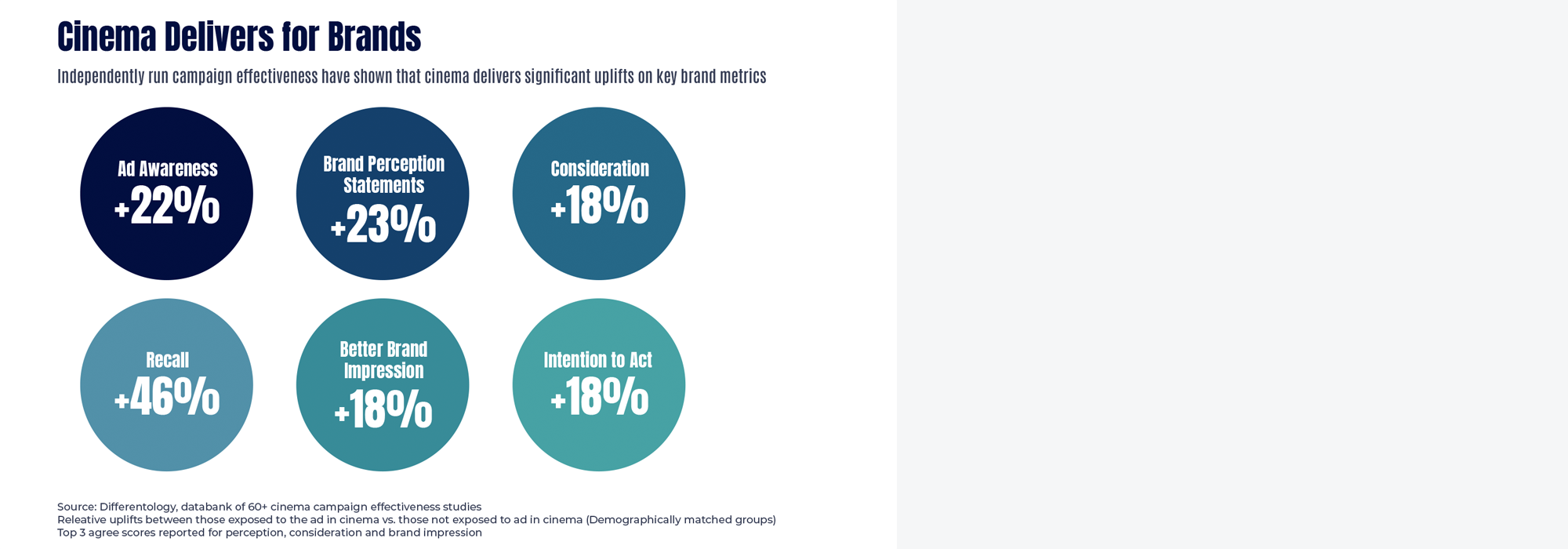
The second study, by DVJ Insights in collaboration with Jean Mineur Mediavision, a Dutch cinema advertising operator, shows why movie-goers perceive cinema ads positively. The study further breaks down key metrics addressed in the first study and proves that cinema ads are the best medium for impacting key brand metrics compared to TV, social media, and other mediums:
Brand Recall: Cinema ads foster enjoyment, distinctiveness, and positive associations, leading to superior brand recall.
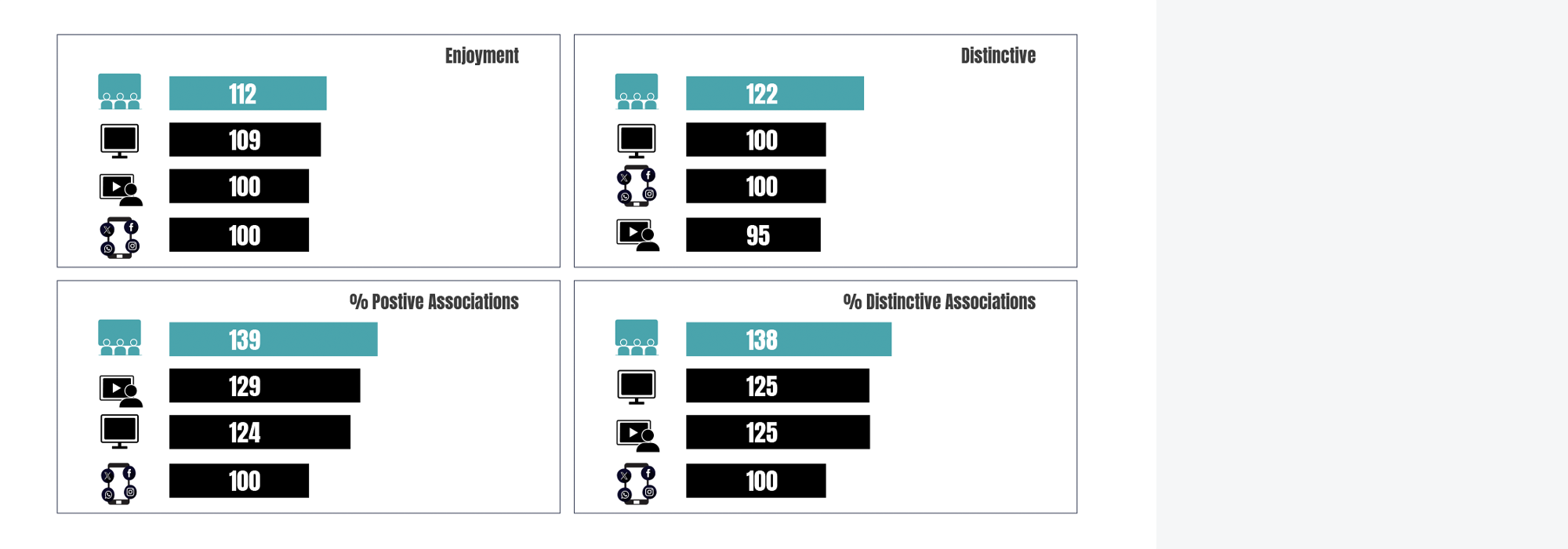
Brand Impact: Cinema ads achieve top-of-mind recall, driving both unaided and aided brand recall, and enhancing message retention.
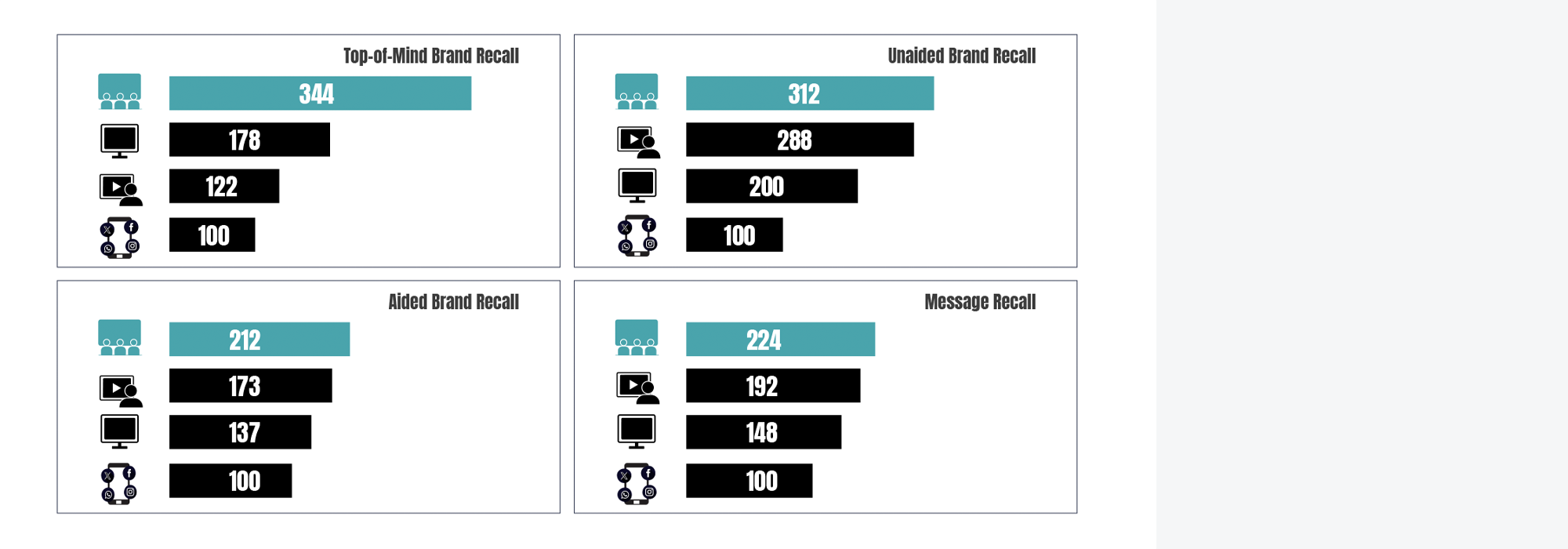
Effect on Action: Cinema ads significantly boost purchase intent and encourage consumers to share positive brand experiences.
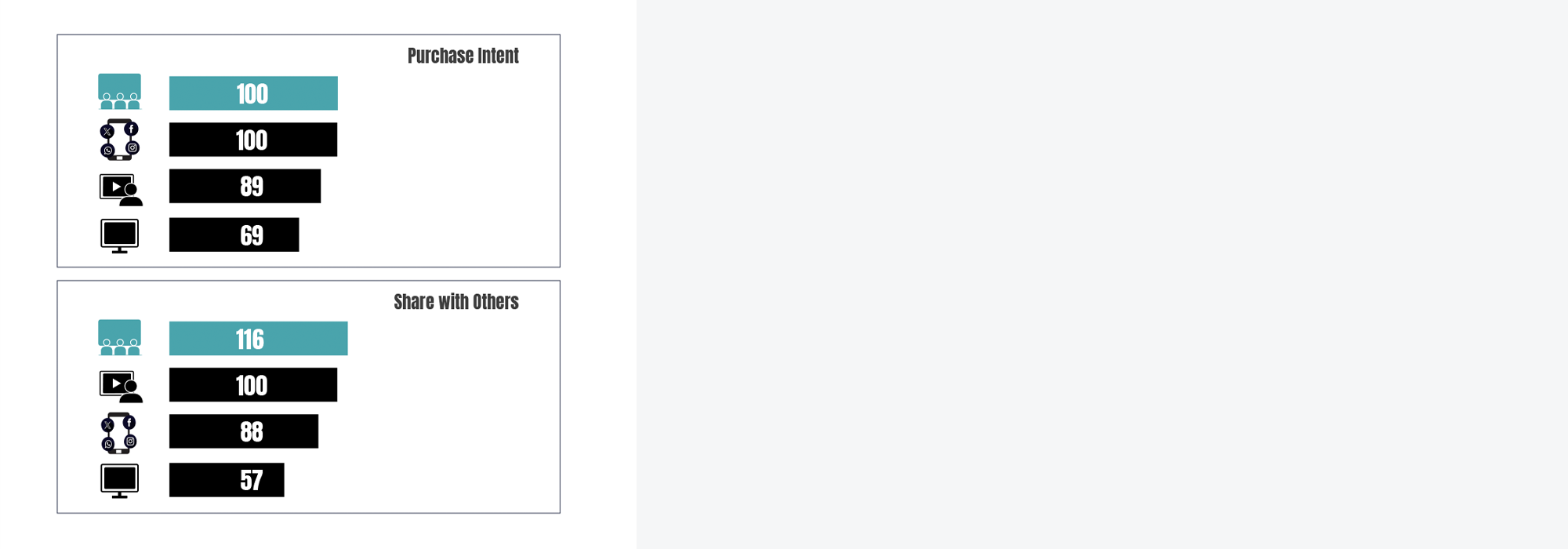
The combined insights from these studies unequivocally demonstrate that cinema creates a powerful platform for enhancing brand recall, fostering positive brand perception, and stimulating purchase intent.
To learn more about how cinema advertising can enhance key brand metrics and maximize ROI, please reach out to a member of our sales team.
Note: The findings discussed in this article are part of larger, more comprehensive studies conducted and published by the credited agencies. For the full analysis, target audiences, and results of these studies, please visit: Study one Study two
Source: DCM, DVJ insights
Ad fraud manifests in many different shapes and forms – from pixel stuffing and ad stacking to fake social media profiles and bots, among others.
Ad fraud is a topic that is less discussed, especially in this region. It is a major threat faced by the digital advertising landscape; we are talking about a multi-billion-dollar industry thriving on deceptive tactics that dupe marketers and agencies every year. According to Statista, ad fraud consumed more than US$80B in ad spend in 2022 and US$84B in 2023 – if the cost of global digital ad fraud were human, it would be the ninth richest person in the world.
So, what is ad fraud? Ad fraud refers to the intentional deception or manipulation of online advertising metrics, such as clicks, impressions, or conversions, to generate false revenue or traffic. Online scammers use various techniques to achieve this, including pixel stuffing (hiding pixels within ads invisible to viewers) and ad stacking (overlaying multiple ads, obscuring each other). Fake social media profiles and click-generating bots further muddy the waters, making it nearly impossible to distinguish genuine user engagement from a carefully constructed digital mirage.
Ad fraud is hard to detect because it may not have an immediate, obvious financial impact. You might think your ad campaign is successful and continue to spend more money on it. In reality, you’re getting fake leads and not reaching potential customers.
Studies suggest a substantial portion of ad spend goes directly into the pockets of fraudsters, leaving advertisers with little to show for their investment. Beyond the financial losses, ad fraud erodes consumer trust. Low-quality online placements inundated with intrusive, irrelevant video ads create rampant annoyance. This negatively impacts brand perception and drives consumers to adopt ad-blocking software, a significant roadblock for campaign reach.
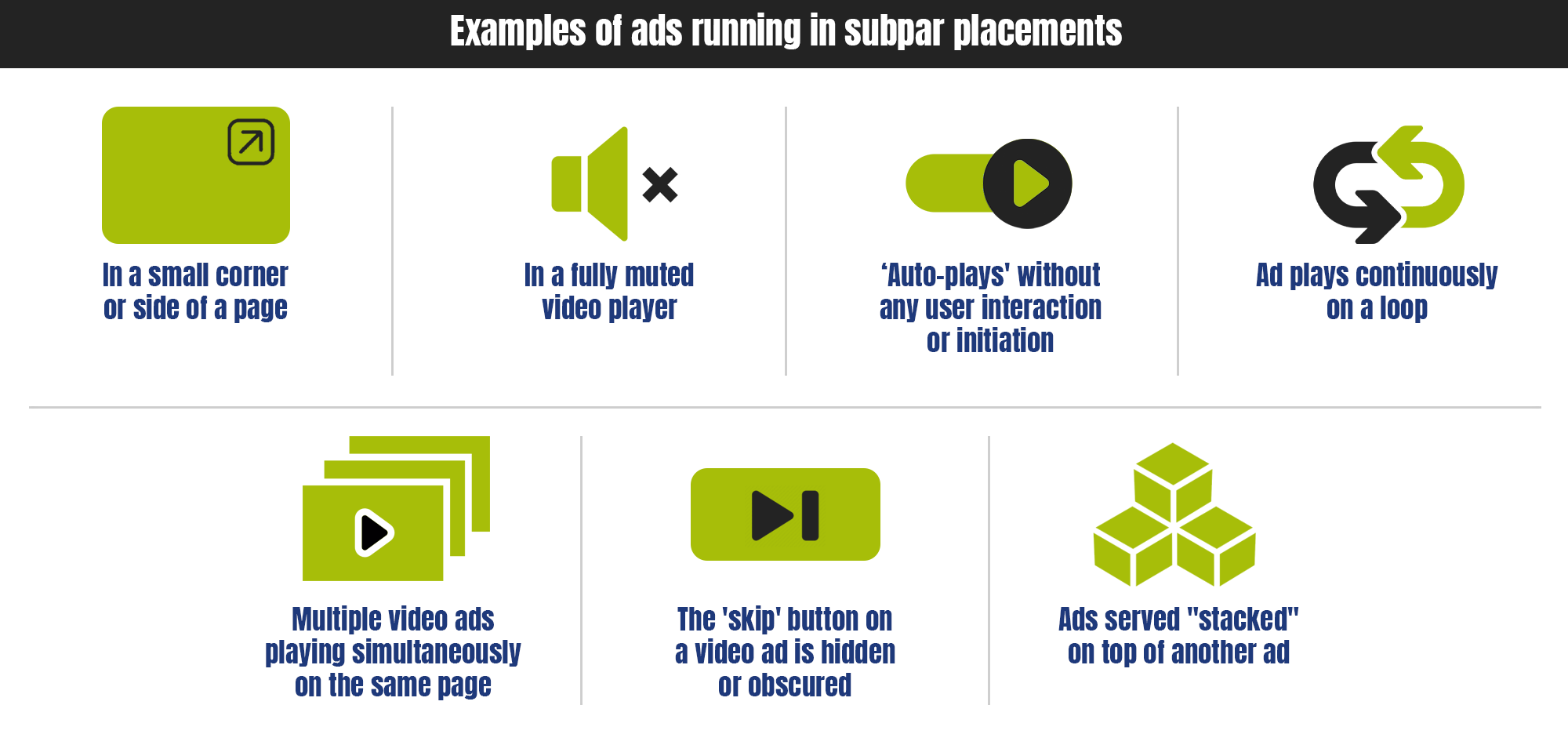
The outlook isn’t all doom and gloom, though. There are ways to protect your budget, starting with a medium that incorporates a one-to-many approach such as cinema advertising. Here is why:
When you book a cinema campaign at the Mall of the Emirates or The Dubai Mall, you know when and where it will appear and that you’ll have an audience – no ad blockers, fast-forwarding, bots, or fake clicks or traffic. You can either buy by screen, by admission, or choose a movie with which your campaign will be played. These options ultimately translate to more transparency, accountability, and verification while decreasing your risk of fraud.
If this isn’t enough, cinema advertising in the region now provides a transparent reporting system like Motivate Val Morgan’s CinePlan and CineMeasure, where advertisers can generate weekly reports to track admissions, demographics, and more.
Transparency issues and ad fraud with digital advertising often mean that video ads mostly appear in cluttered, low-quality digital environments. However, in cinema, your ad takes center stage on the Big Screen, delivering the brand’s message to a real and captive audience, eliminating the risk of fraudulent clicks or impressions.
According to a study by the Video Advertising Bureau (VAB), more than 75% of customers agree that low-quality advertising environments lead to high consumer annoyance. Many types of subpar video placements contribute to this, including ads that seemingly slow-down loading times and multiple video ads playing simultaneously on the same page. Meanwhile, another study by Nielsen shows that consumers consistently engage with high-quality, long-form content on premium video platforms. There is no better match for that than cinema!
According to the NCM & Lumen ‘Cinema in the Media Mix’ study from March 2023, ad engagement with high-quality premium video content generates longer ‘eyes on’ viewing times than other digital and social channels. This less disruptive ad experience enhances memorability, recall and drives purchase intent. Here again, Cinema ranks number one, with close to 80% proven active attention for a 15-second ad.
The latest research from Fiftyfive5, part of Accenture Song, reveals that a single cinema ad delivers the same brand fame as ten digital spots. Cinema isn’t just about delivering a message; it’s about forging lasting connections. The premium nature of the cinema experience elevates the perception of brands advertised. Being associated with high-quality, long-form content positions the advertiser as a premium entity, fostering trust and brand loyalty among viewers.
Cinema offers a unique opportunity to reach a broad range of demographics. With millions of films catering to diverse interests, advertisers can tailor their message to specific target audience demographic groups. This level of audience segmentation surpasses the limitations of online platforms, allowing for more targeted and effective advertising campaigns.
Cinema advertising isn’t confined to static images or intrusive banners. It’s about weaving a narrative within the film’s context. Brands don’t need to rush to include all of their messages in the first four or five seconds – with the logo. Cinema enables emotional storytelling, allowing brands to connect with viewers on a deeper level, leaving a lasting impression that transcends mere product awareness.
Unlike fleeting online interactions, cinema ads create a lasting impact. The large screen experience translates to a higher level of memorability. Combined with the audience’s high attention span, cinema advertising allows brands to build lasting brand awareness and loyalty.
In conclusion, there’s no denying that ad budgets are tight across the board for the foreseeable future, which means that making smart choices to maximize your spend value is more important than ever. With its brand-safe environment, captive audience, and ability to build lasting brand fame, cinema remains an indispensable component of a successful advertising strategy. While digital innovation continues to reshape the advertising landscape, cinema’s ability to connect with audiences on a deeper level ensures its continued relevance in the fight against ad fraud and the pursuit of brand success.
Sources: Statista, The Drum, Video Advertising Bureau (VAB), NCM & Lumen, Nielsen, Ad Week, Campaign Asia
Screenvision Media, in collaboration with Amplified Intelligence and MAGNA Global, has released a media study** providing compelling insights into the effectiveness of cinema advertising and its positive outcomes.
Jennifer Friedlander, Screenvision’s Senior Vice President of Insights and Measurement, explained the study’s dual objectives to Digital Cinema Report: “One was to capture and measure active attention to ads and content in the cinema environment. And two, we wanted to make sure that we had that cinema data available both for ourselves to share with our advertisers and for comparison to other media and also for agencies that are starting to actually plan and optimize against attention data.”
She added, “There is increasingly more evidence that attention drives outcomes across the industry. We have seen this in our own research with proven results on both short-term outcomes such as sales lift to more long-term outcomes such as brand choice and preference.”
Here are the ten findings of the study:










To conclude on key takeaways, cinema advertising offers brands the opportunity to achieve three times higher attention by employing the same TV creative in the cinema. Advertising in cinema drives memory: a single impression in cinema delivers brand and message recall, emphasizing the impact of each impression. It also provides brands with creative freedom in long-form storytelling, eliminating the need to follow specific branding rules required in other mediums such as digital.
Reading this together with the recent study by Fiftyfive5 on Brand Fame, where one cinema ad delivers ten times the brand fame over digital and six times over TV, makes it crystal clear that cinema is a powerhouse and must be included in every video mix.
**Screenvision and Amplified Intelligence recruited 171 moviegoers (aged 18+) with their consent to be filmed entirely during a movie of their choice, without revealing the study’s purpose. This allowed participants to engage in their normal cinema-going activities with complete flexibility, such as enjoying snacks, leaving the theater, or using the bathroom. Eleven ads from various brand verticals, including automotive, entertainment, shipping, and telecom, were shown during the pre-show.
Sources:
Screen Vision, MAGNA global, SAWA, Digital Cinema Report